Improving Your Home with DIY Pallet Projects
Are you tired of the same old decor in your home? Do you want to add a touch of creativity and sustainability to your living space? If so, you've come to the right place! DIY pallet projects are not just a trend; they are a fantastic way to enhance your home while also being kind to the environment. By repurposing wooden pallets, you can create stunning and functional pieces that reflect your personal style. Imagine transforming a simple pallet into a charming coffee table or a beautiful garden bench! The possibilities are endless, and the best part is that you can do it all yourself.
Pallets are widely available, often for free or at a low cost, making them a cost-effective choice for home improvement. Not only does this approach save you money, but it also promotes sustainability by giving new life to materials that might otherwise end up in a landfill. Plus, the versatility of pallets allows you to craft a wide range of items, from rustic furniture to decorative accents, all tailored to your taste.
In this article, we will explore various ideas and techniques to help you transform pallets into functional and decorative home items. Whether you're a seasoned DIYer or just starting, there's something here for everyone. So, roll up your sleeves, grab your tools, and let's dive into the exciting world of DIY pallet projects!
When it comes to home improvement, incorporating pallets into your projects comes with a plethora of benefits. First and foremost, they are incredibly cost-effective. Many businesses give away pallets for free, or you can find them at a very low cost at local supply stores. This means you can create beautiful home decor without breaking the bank!
Another significant advantage is sustainability. In a world where we're increasingly aware of our environmental impact, using reclaimed materials like pallets is a step in the right direction. By reusing pallets, you're not only saving money but also reducing waste.
Additionally, pallets are highly versatile. You can use them to create a variety of items, such as:
- Furniture: Coffee tables, chairs, and even beds.
- Garden decor: Planters, trellises, and benches.
- Home accents: Wall art, shelves, and decorative screens.
With just a little imagination and effort, you can transform these simple wooden structures into stunning pieces that enhance your living space.
Before you embark on your DIY pallet journey, it's crucial to gather the essential tools that will make your crafting experience smoother and more efficient. Having the right tools can make all the difference in achieving a professional-looking finish. Here’s a rundown of the must-have tools:
Every DIY enthusiast should have a set of basic hand tools. These include:
- Hammer: Essential for driving nails and assembling pieces.
- Saw: A handsaw or jigsaw will help you cut pallets to the desired size.
- Screwdrivers: Both flathead and Phillips screwdrivers are necessary for assembly.
These tools are the backbone of your DIY project and will help you craft with precision.
If you're looking to streamline your pallet project, consider investing in some power tools. A circular saw can make cutting through wood a breeze, while a sander will ensure your surfaces are smooth and ready for finishing. If you're serious about your DIY endeavors, a drill is also a must-have for quick assembly.
Safety should always come first when working on DIY projects. Make sure to equip yourself with:
- Gloves: Protect your hands from splinters and sharp edges.
- Goggles: Shield your eyes from dust and debris.
- Dust Masks: Prevent inhalation of fine particles while sanding.
With the right tools and safety equipment, you'll be well on your way to creating stunning pallet projects that will enhance your home.
Now that you're equipped with the necessary tools, let’s explore some creative pallet project ideas that will inspire your next DIY adventure!
Creating furniture from pallets is one of the most popular ways to use them. You can craft:
- Coffee Tables: Stack a few pallets and add a glass top for an elegant touch.
- Chairs and Benches: Build sturdy seating for your living room or patio.
- Shelves: Use pallets to create rustic shelving units that add character to your space.
Pallets can also be used to enhance your outdoor space. Consider making:
- Planters: Cut pallets to create unique garden beds.
- Benches: A simple pallet bench can be a great addition to your garden.
- Decorative Screens: Use pallets to create privacy screens that add charm to your patio.
With a little creativity, pallets can transform your home and garden into a beautiful, personalized space.
To ensure your DIY pallet projects are successful, keep these tips in mind:
Before starting any project, it's essential to prepare and clean your pallets. Remove any nails or staples and sand down rough edges. This step not only makes your pallets safe to work with but also helps in achieving a polished final product.
Once your project is complete, don't forget to add the finishing touches! Techniques like staining, painting, or sealing can enhance the appearance of your pallet creations and protect them from wear and tear.
After all your hard work, it's important to maintain your pallet projects to ensure they last. Regular cleaning and care will prevent wear and tear and keep them looking great.
Dust and dirt can accumulate on your pallet items, so make it a habit to clean them regularly. A simple wipe down with a damp cloth can do wonders!
If you've created outdoor projects, consider weatherproofing them to withstand the elements. Using a weather-resistant sealant can help protect your creations from rain and sun damage.
In conclusion, DIY pallet projects offer a unique opportunity to enhance your home while promoting sustainability and creativity. Whether you're crafting furniture, garden decor, or decorative accents, the satisfaction of creating something beautiful with your own hands is unmatched. So, gather your tools, unleash your creativity, and start transforming those pallets into stunning home enhancements!
Q: Where can I find pallets for my projects?
A: Pallets can often be found for free at local businesses, warehouses, or home improvement stores. Just be sure to check that they are safe for use.
Q: How do I know if a pallet is safe to use?
A: Look for pallets that are marked with the HT (heat-treated) stamp, as these are safe for indoor use. Avoid pallets that have been treated with chemicals.
Q: What tools do I need to get started?
A: Basic hand tools like hammers, saws, and screwdrivers are essential. Power tools like drills and sanders can also make your project easier.
Q: Can I use pallets for outdoor furniture?
A: Yes! Just make sure to weatherproof your outdoor projects to ensure they last in the elements.
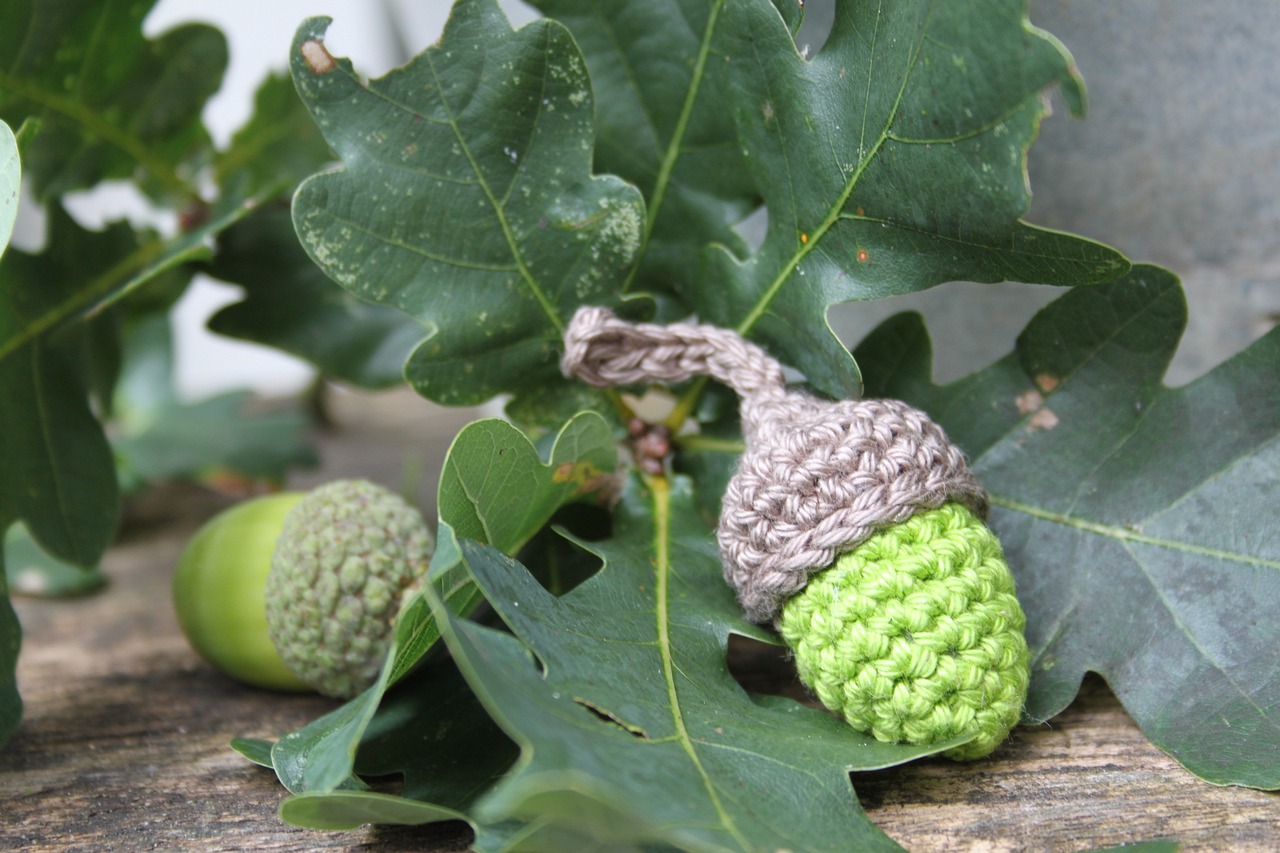
Benefits of Using Pallets
When it comes to home improvement, using pallets can be a game changer! Imagine transforming a simple stack of wood into functional and stylish pieces for your home. Pallets are not just a trend; they offer a multitude of benefits that can enhance your living space while being easy on your wallet. Let's dive into some of the most significant advantages of using pallets for your DIY projects.
First and foremost, one of the most appealing aspects of pallets is their cost-effectiveness. Many businesses are willing to give away pallets for free or at a minimal cost, making them an affordable option for those looking to spruce up their homes without breaking the bank. This allows you to invest more in other areas of your project, like paints or finishing touches, rather than spending a fortune on materials.
Another fantastic benefit is the sustainability factor. In a world where environmental concerns are paramount, using pallets is a great way to contribute to recycling efforts. Instead of ending up in a landfill, these wooden structures can be repurposed into stunning furniture or decorative items. By choosing pallets, you’re not just enhancing your home; you’re also making a positive impact on the planet!
Moreover, pallets are incredibly versatile. With a little creativity, you can transform them into a wide range of items, from coffee tables to garden planters. The possibilities are virtually limitless! You can customize your projects to fit any style, whether you prefer a rustic look or something more modern. This versatility allows you to express your personality and creativity in your home decor.
Additionally, using pallets allows for a sense of accomplishment and personalization. Every project you undertake is a reflection of your unique style and skills. The satisfaction of creating something from scratch is immeasurable. You can take pride in knowing that you crafted a beautiful piece of furniture or decor that no one else has!
To summarize, the benefits of using pallets for DIY projects include:
- Cost-effectiveness: Affordable materials that save you money.
- Sustainability: Eco-friendly options that reduce waste.
- Versatility: Endless possibilities for customization.
- Personalization: Unique creations that reflect your style.
In conclusion, embracing pallets in your home improvement projects not only enhances your living space but also contributes positively to your budget and the environment. So, why not grab a few pallets and start crafting? Your home will thank you!
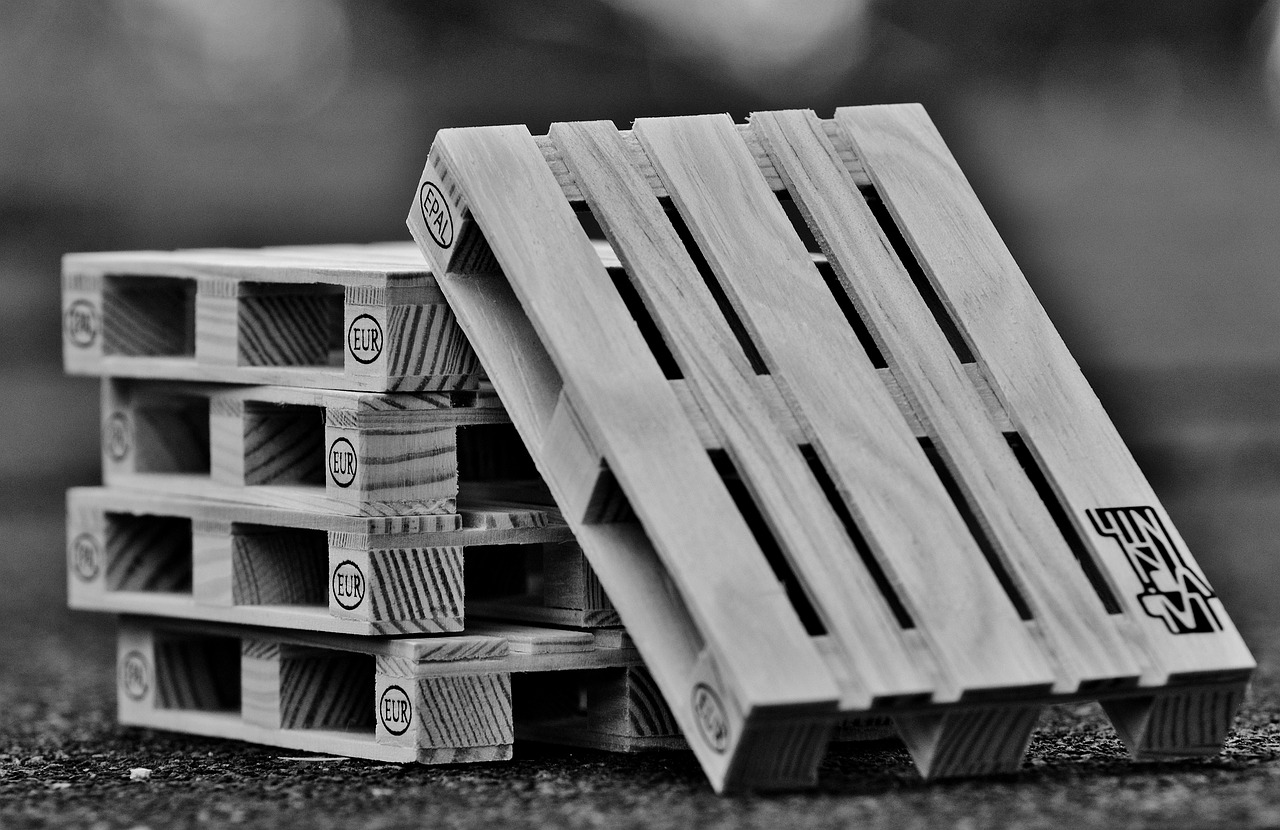
Essential Tools for Pallet Projects
When diving into the exciting world of DIY pallet projects, having the right tools is like having a treasure map; it guides you to success! Whether you’re a seasoned pro or just starting out, the right tools can make a world of difference in your crafting experience. So, what exactly do you need? Let’s explore the essentials that will help you transform those humble pallets into stunning home enhancements.
First on the list are basic hand tools. These are the backbone of any DIY project. A good hammer is essential for driving nails and assembling your pieces. You’ll also need a reliable saw, preferably a handsaw or a jigsaw, to cut the pallets down to size. A screwdriver set is another must-have, as it will help you secure the pieces together. Don’t overlook the importance of a measuring tape and a square to ensure your cuts are precise and your projects are level. These tools are typically easy to find and won’t break the bank!
Next up, let’s talk about power tools. If you want to speed up your projects and achieve cleaner cuts, investing in a few power tools can be a game-changer. A power drill is fantastic for making holes and driving screws quickly. A circular saw can cut through pallets like butter, saving you time and effort. If you're feeling adventurous, a router can help you add decorative edges to your projects, giving them a professional finish. While power tools can be a bit pricier, they are worth every penny for the convenience they provide.
Of course, safety should always be your top priority when working on any DIY project. This brings us to safety equipment. Don’t forget to equip yourself with gloves to protect your hands from splinters and sharp edges. A good pair of safety goggles is essential to shield your eyes from dust and debris, especially when cutting or sanding. Lastly, consider wearing a mask to prevent inhaling any harmful particles, particularly when working with older pallets that may have been treated with chemicals.
Now that you have a solid understanding of the tools needed, it’s time to think about choosing the right pallets. Not all pallets are created equal, and selecting the right type can significantly impact your project’s outcome. Look for pallets that are made of high-quality wood, free from damage, and have a clean appearance. Avoid pallets that have been treated with chemicals, as they may pose health risks. When it comes to size, consider what you want to create; larger pallets are great for furniture, while smaller ones can work well for decorative items.
In summary, having the right tools and safety equipment is crucial for a successful DIY pallet project. From basic hand tools like hammers and saws to powerful drills and safety gear, equipping yourself properly will not only make the process smoother but also more enjoyable. So gather your tools, choose your pallets wisely, and get ready to unleash your creativity!
- What type of pallets are best for DIY projects? Look for heat-treated pallets that are clean and free of chemicals.
- Do I need power tools for pallet projects? While not necessary, power tools can make your work faster and easier.
- How do I ensure safety while working with pallets? Always wear gloves, goggles, and a mask to protect yourself from dust and splinters.
- Can I use any type of wood for my pallet projects? It’s best to stick with hardwood pallets for durability and aesthetics.

Basic Hand Tools
When diving into the world of DIY pallet projects, having the right tools can make all the difference. Think of these as your trusty sidekicks, ready to assist you in transforming those wooden pallets into stunning home décor or functional furniture. First and foremost, a hammer is essential. It’s not just for driving nails; it’s also great for removing them when you make a mistake (and trust me, we all do!). A quality hammer can help you achieve that perfect fit when assembling your creations.
Next up, you’ll want a reliable saw. Whether you choose a hand saw or a more advanced option like a jigsaw, this tool will be your best friend when it comes to cutting pallets down to size. Remember, precision is key! A well-cut piece is the foundation of any successful project. While you’re at it, don’t forget about a screwdriver. This tool is crucial for securing your pieces together, ensuring that your furniture or décor stands the test of time.
Additionally, having a measuring tape on hand is vital. It’s easy to get caught up in the excitement of crafting, but accurate measurements will save you from the headache of mismatched pieces. Imagine trying to fit a square peg in a round hole—that’s what it feels like when your measurements are off! A level is another handy tool to keep everything straight and aligned, especially if you’re building something like a shelf or table.
In summary, here’s a quick rundown of the basic hand tools you’ll need for your pallet projects:
- Hammer - For driving and removing nails.
- Saw - For cutting pallets to size.
- Screwdriver - For securing pieces together.
- Measuring Tape - For accurate measurements.
- Level - To ensure everything is straight and aligned.
Equipping yourself with these basic hand tools will not only make your DIY journey smoother but also enhance the quality of your final products. So, gear up and get ready to unleash your creativity with pallets!
Q: Do I need advanced tools for pallet projects?
A: Not at all! Basic hand tools are often sufficient for most DIY pallet projects. As you gain experience, you might want to explore power tools for efficiency, but starting simple is perfectly fine.
Q: Where can I find pallets for my projects?
A: Pallets can often be found at local warehouses, grocery stores, or home improvement stores. Just be sure to check their condition and avoid any that have been treated with harmful chemicals.
Q: How do I ensure my pallet projects are safe?
A: Always inspect your pallets for damage, and make sure to clean and sand them before use. Additionally, wearing safety gear like gloves and goggles while working is essential to protect yourself.

Power Tools to Consider
When diving into the world of DIY pallet projects, having the right tools can make a world of difference. While basic hand tools are essential, power tools can significantly enhance your efficiency and precision. Imagine trying to cut through thick wood with a hand saw; it’s not only time-consuming but can also lead to uneven edges. That’s where power tools come into play!
First up, consider investing in a circular saw. This tool is perfect for making straight cuts through pallets with ease. It’s like having a magic wand that turns your ideas into reality in a fraction of the time. Additionally, a jigsaw can be incredibly useful for making intricate cuts and curves, allowing you to unleash your creativity and design unique shapes.
Another essential power tool is the drill. Whether you're assembling furniture or creating wall art, a drill helps you drive screws quickly and securely. It’s a real game-changer when it comes to efficiency. Moreover, a sander will be your best friend when it comes to finishing your projects. A smooth finish not only looks great but also ensures the longevity of your creations. Nobody wants splinters from a rough surface!
For those looking to take their projects to the next level, consider a router. This tool allows you to add decorative edges and grooves to your pallet creations, giving them a professional touch. Lastly, don’t overlook a palm sander for those finishing touches; it’s perfect for getting into tight corners and ensuring an even finish.
In summary, while hand tools are great for starting out, incorporating power tools into your DIY pallet projects can save you time and effort, allowing you to focus on the fun part—being creative! So, gear up and get ready to transform those pallets into stunning home enhancements!
Q: Do I need to be experienced to use power tools?
A: Not at all! Many power tools are designed for ease of use, and with a bit of practice, you'll become comfortable in no time. Just remember to read the manual and follow safety instructions.
Q: Are there any specific safety precautions I should take when using power tools?
A: Absolutely! Always wear safety goggles to protect your eyes, use ear protection if the tool is loud, and ensure you're working in a well-ventilated area. Additionally, keep your workspace tidy to prevent accidents.
Q: Can I use any type of pallet for my projects?
A: It's essential to choose pallets that are safe and untreated. Look for heat-treated pallets, which are marked with the "HT" stamp. Avoid pallets that have been chemically treated, as they can contain harmful substances.
Q: What if I don’t have access to power tools?
A: While power tools can make the job easier, you can still create beautiful pallet projects using hand tools. Just be prepared for a bit more effort and time!

Safety Equipment
When diving into the world of DIY pallet projects, safety should always be your top priority. Working with pallets can be fun and rewarding, but it also comes with its fair share of risks. Therefore, equipping yourself with the right safety gear is essential to ensure a smooth and accident-free crafting experience. Think of it as wearing a superhero's armor; it protects you from potential hazards while you unleash your creativity!
First and foremost, gloves are a must-have. They protect your hands from splinters, sharp edges, and any chemicals you might encounter, such as wood stains or treatments. Opt for durable work gloves that provide a good grip while allowing dexterity—after all, you still want to feel the wood as you work on your projects!
Next, safety goggles are crucial for protecting your eyes. Whether you’re cutting, sanding, or drilling, debris can fly around unexpectedly. A good pair of goggles will shield your eyes from dust and small particles that could cause irritation or injury. Remember, your vision is priceless!
In addition to gloves and goggles, consider wearing a dust mask. When working with pallets, especially during sanding or cutting, fine dust particles can become airborne. A dust mask will help filter out these particles, keeping your lungs safe from irritation. Think of it as your personal air purifier while you craft!
Lastly, if you’re using power tools, don’t forget about ear protection. Prolonged exposure to loud noises from saws and drills can damage your hearing. Earplugs or earmuffs can go a long way in preserving your auditory health, ensuring that you can continue to enjoy your DIY adventures for years to come.
To summarize, here’s a quick table of essential safety equipment you should consider for your pallet projects:
| Safety Equipment | Purpose |
|---|---|
| Gloves | Protects hands from splinters and sharp edges |
| Safety Goggles | Shields eyes from dust and debris |
| Dust Mask | Filters out airborne particles |
| Ear Protection | Prevents hearing damage from loud tools |
By investing in these safety essentials, you’re not just protecting yourself; you’re ensuring that your DIY pallet journey is an enjoyable and fulfilling experience. So, gear up and get ready to create amazing things while keeping safety at the forefront!
Q: Do I really need to wear safety equipment when working with pallets?
A: Absolutely! Safety equipment is essential to protect yourself from potential injuries, splinters, and harmful particles. It’s always better to be safe than sorry!
Q: What type of gloves should I use for pallet projects?
A: Look for durable work gloves that offer a good grip and are resistant to cuts and punctures. Leather or heavy-duty synthetic materials are great options.
Q: Can I use regular glasses instead of safety goggles?
A: While regular glasses can offer some protection, they don’t provide the same level of coverage as safety goggles. It’s best to use goggles designed specifically for eye protection.
Q: How can I ensure my work area is safe?
A: Keep your workspace clean and organized, remove any trip hazards, and make sure you have adequate lighting. A safe environment is key to a successful DIY project!

Choosing the Right Pallets
When it comes to DIY pallet projects, is crucial for ensuring both the safety and success of your creations. Not all pallets are created equal, and understanding the differences can make a world of difference in your finished product. First and foremost, you'll want to consider the quality of the wood. Look for pallets that are sturdy and free from damage. Cracked, splintered, or broken pallets can lead to safety hazards and unsightly furniture. If you're unsure, give the pallet a gentle shake; if it feels wobbly, it's best to pass on that one.
Next, think about the size of the pallets you need. Standard pallets come in various dimensions, with the most common being 48 inches by 40 inches. However, depending on your project, you may need smaller or larger pallets. For example, if you're planning to create a coffee table, a standard pallet would likely work perfectly. But for a garden bench, you might consider using a combination of smaller pallets to achieve the desired look and functionality.
Another important factor is the type of wood used in the pallets. Most pallets are made from hardwoods like oak or softwoods like pine. Hardwoods tend to be more durable and can hold up better over time, making them a great choice for furniture. On the other hand, softwoods are lighter and easier to work with, which can be beneficial for smaller projects. If you’re unsure about the wood type, you can often find manufacturer markings on the pallets that indicate the material used.
Additionally, be mindful of the treatment and safety of the pallets. Many pallets are treated with chemicals to prevent pests and decay, which can be harmful if used indoors or for projects involving food. Look for pallets marked with HT (heat-treated) rather than MB (methyl bromide), as the latter indicates chemical treatment. Heat-treated pallets are safe for indoor use and can be a great option for crafting.
Before you start your project, it’s a good idea to inspect the pallets thoroughly. Check for any rusty nails or screws that could pose a risk during assembly. If you find any, make sure to remove them carefully. Remember, the goal is to create something beautiful and functional, so taking the time to select the right pallets will pay off in the end.
In summary, choosing the right pallets involves considering several key factors: quality, size, wood type, and treatment. By paying attention to these details, you'll set yourself up for success in your DIY pallet projects. So, gather your pallets with care, and let your creativity flow!
- What type of pallets should I avoid? It's best to avoid pallets that are damaged, have chemical treatments, or are made from softwood if you're looking for durability.
- Can I use pallets for indoor furniture? Yes! Just make sure to choose heat-treated pallets to avoid harmful chemicals.
- How do I clean pallets before use? Use a mixture of soap and water to clean them thoroughly, and let them dry completely before starting your project.
- Where can I find pallets? You can often find pallets at local businesses, warehouses, or online marketplaces. Just make sure to inspect them before taking them home!

Creative Pallet Project Ideas
When it comes to transforming your living space, DIY pallet projects offer endless possibilities that are not only functional but also aesthetically pleasing. Imagine turning a simple wooden pallet into a stunning coffee table that becomes the centerpiece of your living room. The beauty of pallet projects lies in their versatility; you can create anything from furniture to decorative accents that reflect your personal style. So, let’s dive into some creative ideas that will inspire your next DIY adventure!
One of the most popular uses for pallets is in creating furniture. With just a few pallets, you can craft a rustic dining table, a stylish sofa, or even a chic bar cart. For instance, a pallet coffee table can be easily made by stacking two pallets on top of each other, adding some wheels for mobility, and finishing it off with a glass top for a modern touch. This not only adds character to your space but also serves as a conversation starter during gatherings.
But why stop at indoor furniture? Your outdoor space deserves some love too! Pallet projects can breathe new life into your garden or patio. Consider building a pallet planter to display your favorite flowers or herbs. Simply cut the pallets to your desired height, add some landscape fabric, and fill them with soil. This not only saves you money but also allows you to customize the size and design to fit your space perfectly. Additionally, you can create a cozy outdoor bench or a unique trellis for climbing plants, making your garden a true oasis.
If you’re looking for more decorative elements, pallets can be transformed into stunning wall art or shelves. Imagine a large pallet frame displaying a collection of your favorite photos or artwork. You can also create a pallet shelf to showcase your books, plants, or decorative items. By adding a few hooks, you can even make a functional entryway organizer for keys and bags. The rustic charm of pallets adds a warm and inviting feel to any room.
For those who love to entertain, consider crafting a pallet bar. This can be a fun weekend project that will impress your friends. You can design a simple bar by stacking pallets and adding a countertop. Don’t forget to include some storage for bottles and glasses! A pallet bar is perfect for summer parties and can easily be moved around to suit your needs.
Finally, let’s not forget about the practical side of pallets. They can be used to create storage solutions that help keep your home organized. From pallet shoe racks to toy organizers, the possibilities are endless. You can customize the size and design to fit any space, making it a perfect solution for cluttered areas.
In summary, the world of pallet projects is vast and filled with opportunities to enhance your home. Whether you want to create stylish furniture, charming decor, or practical storage solutions, pallets can be your best friend in DIY home improvement. So gather your materials, unleash your creativity, and start transforming those humble pallets into something extraordinary!
- What types of pallets are safe to use for DIY projects? It’s best to use heat-treated pallets (marked with "HT") as they are considered safe for indoor projects. Avoid pallets that have been treated with chemicals.
- How do I clean and prepare pallets for crafting? Start by removing any nails or staples, then wash the pallets with soap and water. Allow them to dry completely before using them for your projects.
- Can I use pallets for outdoor furniture? Yes, but make sure to weatherproof them by using outdoor sealants or paints to protect them from the elements.

Pallet Furniture
When it comes to enhancing your home, stands out as a unique and eco-friendly option that combines creativity with functionality. Imagine transforming a simple wooden pallet into a stunning coffee table or a cozy bench for your patio. The beauty of pallet furniture lies in its versatility; it can be tailored to fit any space or style, making it an ideal choice for both indoor and outdoor settings.
One of the most popular pallet furniture projects is the pallet sofa. With a few pallets, some cushions, and a splash of paint, you can create a comfortable seating area that invites relaxation. Not only is it cost-effective, but it also allows you to express your personality through design. You can choose to leave the wood in its natural state for a rustic look or paint it in vibrant colors to match your decor.
Another fantastic idea is to build a pallet coffee table. This piece can become the centerpiece of your living room, where you can enjoy coffee with friends or display your favorite decor items. You can enhance the functionality of your coffee table by adding wheels for mobility or incorporating storage space underneath. The possibilities are endless!
For those looking to maximize space, consider creating pallet shelves. These can be mounted on walls to display books, plants, or cherished photographs. Pallet shelves not only save space but also add a rustic charm to your home. The process is straightforward: simply cut the pallets to your desired size, sand them down, and secure them to the wall. You’ll have a stylish storage solution in no time!
In addition to these indoor projects, pallet furniture shines in outdoor settings as well. Think about crafting a pallet bench for your garden or patio. With a few modifications, you can create a sturdy and inviting space for family gatherings or quiet evenings under the stars. Adding some outdoor cushions can make it even cozier.
To summarize, pallet furniture is not just a trend; it’s a sustainable and creative way to furnish your home. Here are some quick benefits:
- Cost-effective: Pallets are often free or inexpensive.
- Eco-friendly: Using recycled materials reduces waste.
- Customizable: You can easily personalize designs to fit your style.
- Durable: When treated properly, pallet furniture can last for years.
So, whether you're a seasoned DIYer or a beginner looking for a fun project, consider diving into the world of pallet furniture. It's a rewarding experience that not only beautifies your home but also gives you a sense of accomplishment. And remember, the only limit is your imagination!
Q: Are pallets safe to use for furniture?
A: Yes, as long as you choose heat-treated pallets and clean them properly before use. Avoid pallets that have been treated with harmful chemicals.
Q: How do I clean and prepare pallets for furniture projects?
A: First, inspect the pallets for any damage or splinters. Then, wash them with soap and water, and let them dry completely. Sanding the surfaces will also help in achieving a smooth finish.
Q: Can I paint or stain pallet furniture?
A: Absolutely! You can paint or stain your pallet furniture to match your decor. Just make sure to use outdoor-safe products if the furniture will be placed outside.

Garden and Outdoor Projects
When it comes to enhancing your outdoor space, DIY pallet projects offer a world of possibilities that can transform your garden into a personal oasis. Imagine stepping into your backyard and being greeted by charming, rustic furniture crafted from reclaimed pallets. Not only do these projects allow you to express your creativity, but they also promote sustainability by repurposing materials that might otherwise go to waste.
One of the most popular pallet projects for gardens is the creation of pallet planters. These can be designed in various shapes and sizes, allowing you to grow flowers, herbs, or even vegetables in a stylish way. Simply stack pallets vertically, fill them with soil, and plant your favorite greenery. This vertical gardening technique not only saves space but also adds a unique visual element to your garden.
Another fantastic idea is to build a pallet bench. Picture this: a cozy spot in your garden where you can relax with a good book or enjoy a cup of coffee while soaking up the sun. Constructing a bench from pallets is relatively straightforward and can be customized to match your outdoor decor. You can even add cushions for extra comfort, turning it into the perfect lounging area.
For those who love entertaining outdoors, consider creating a pallet bar. This project can be a real showstopper at your next gathering. Simply stack and secure pallets to form a bar structure, and add a countertop made from a solid wood slab or even another pallet. Decorate it with fairy lights or potted plants to give it a festive touch. Your friends will be impressed, and you’ll have a fantastic space to serve drinks and snacks.
Additionally, you can craft decorative screens from pallets. These screens can serve multiple purposes: they can provide privacy, act as a windbreak, or simply enhance the aesthetics of your garden. By painting or staining the pallets, you can match the screen to your garden's color scheme, making it a beautiful focal point.
To give you a better idea of how versatile pallet projects can be, here’s a quick overview of some popular garden and outdoor projects:
| Project | Description |
|---|---|
| Pallet Planter | Vertical structures for planting flowers, herbs, or vegetables. |
| Pallet Bench | A comfortable seating area for relaxation or socializing. |
| Pallet Bar | A fun space for serving drinks and snacks during gatherings. |
| Decorative Screens | Privacy screens that add aesthetic appeal and functionality. |
With a little imagination and some basic tools, you can turn ordinary pallets into extraordinary outdoor features. The best part is that these projects not only beautify your space but also provide a sense of accomplishment and pride in your DIY skills. So, grab those pallets and let your creativity run wild in your garden!
Q: Are all pallets safe to use for outdoor projects?
A: Not all pallets are safe. Look for heat-treated pallets (marked with "HT") and avoid those treated with chemicals (marked with "MB").
Q: How do I weatherproof my pallet projects?
A: Use outdoor sealants or paints specifically designed for wood to protect your pallet creations from the elements.
Q: Can I paint my pallet furniture?
A: Absolutely! Painting your pallet projects can add a personal touch and help protect the wood from the weather.
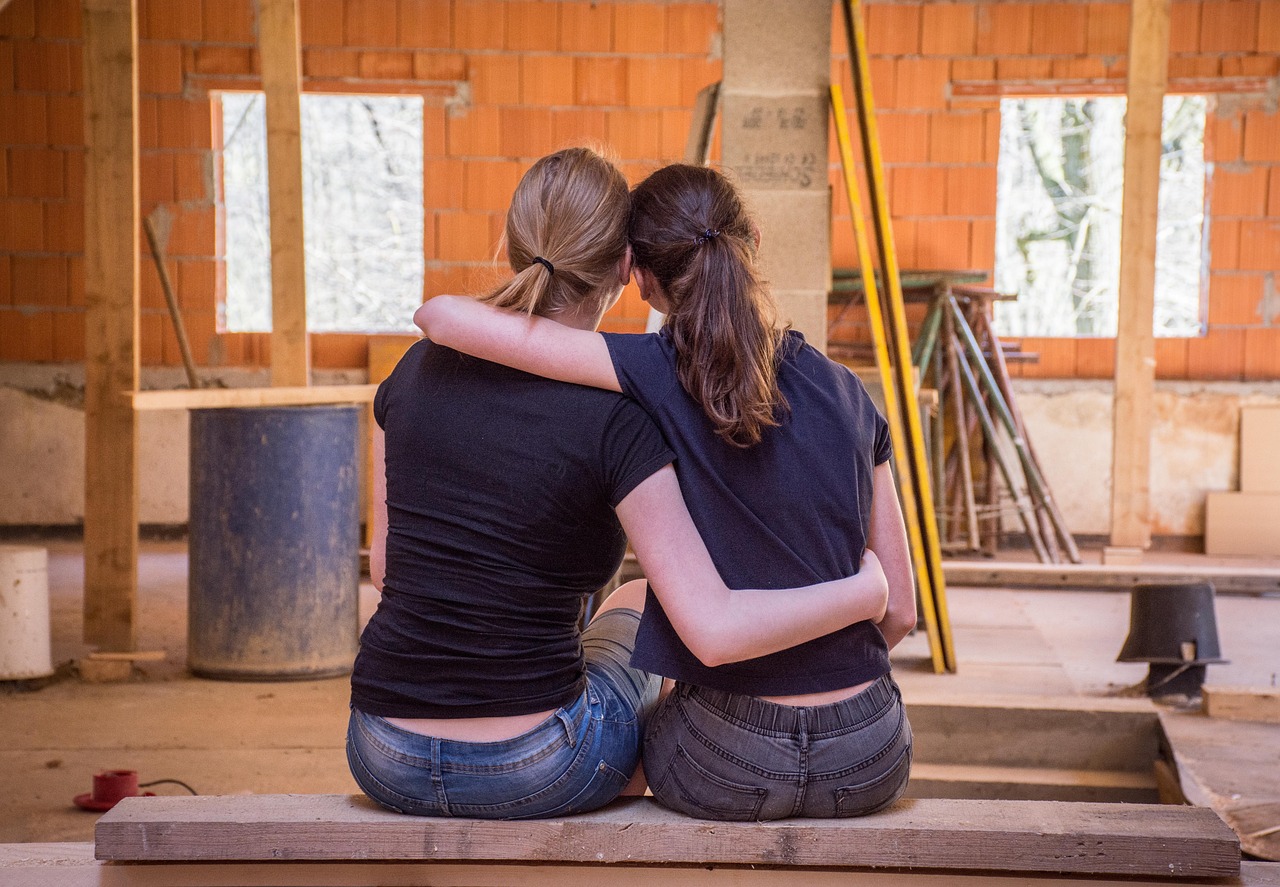
Tips for Successful Pallet Projects
When diving into the world of DIY pallet projects, it's essential to equip yourself with some invaluable tips that can significantly enhance your crafting experience. First and foremost, preparation is key. Before you even think about picking up a tool, ensure that your pallets are clean and safe to work with. This means inspecting them for any signs of damage, such as splinters or mold, and giving them a thorough cleaning. A simple wash with soap and water, followed by a good drying session, can make all the difference in the quality of your final product.
Once your pallets are clean and ready, it's time to focus on assembly techniques. A well-thought-out plan can save you a lot of headaches down the line. Start by sketching out your project; having a visual guide can help you stay organized and focused. When assembling, consider using wood glue in addition to screws. This combination not only provides a stronger bond but also minimizes the risk of splitting the wood. Remember, patience is your best friend here; rushing through assembly can lead to mistakes that are hard to fix!
Now, let’s talk about finishing touches. The way you finish your pallet project can elevate its look from rustic to refined. Techniques such as sanding are crucial to achieving a smooth surface, which not only looks better but also feels better to the touch. After sanding, you might choose to stain or paint your project. Staining can enhance the natural beauty of the wood, while painting opens up a world of color possibilities. Don't forget to apply a protective sealant afterward to ensure durability—especially if your project will be exposed to the elements.
And speaking of elements, if your pallet project is intended for outdoor use, you’ll want to take extra steps to weatherproof it. This includes choosing the right type of wood and applying a weather-resistant finish. Regular maintenance will also help keep your outdoor pieces looking fresh. A quick wash and touch-up every now and then can go a long way in preserving their charm.
Finally, don't hesitate to get creative! While there are many tried-and-true methods for working with pallets, the beauty of DIY projects lies in their personalization. Whether you're crafting a coffee table or a garden bench, feel free to add your unique flair. Use colors, patterns, and accessories that resonate with your personal style. After all, these projects are not just about functionality; they’re about making your space truly yours.
- What type of pallets should I use for my projects? Look for heat-treated pallets that are clean and free of chemicals. Avoid pallets marked with "MB," as they may be treated with methyl bromide, which is toxic.
- How do I ensure my pallet furniture is safe to use? Always inspect for nails and splinters, and consider sanding down rough edges. Using a sealant can also help protect against any lingering chemicals.
- Can I use pallets for outdoor projects? Yes! Just make sure to weatherproof them adequately, and choose durable wood types that can withstand the elements.
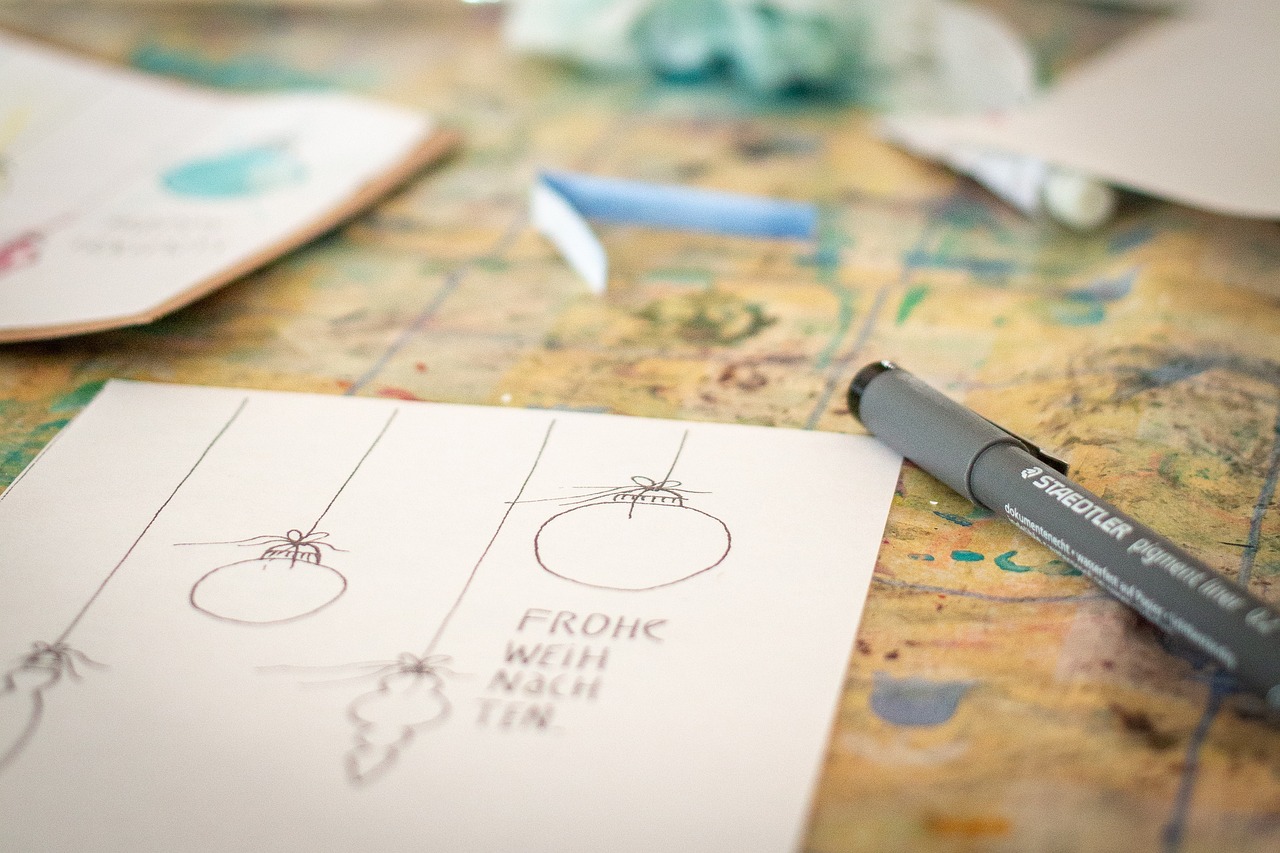
Preparation and Cleaning
Before diving into your DIY pallet project, it's crucial to focus on . This step is not just a formality; it's the foundation that ensures your creations are both safe and durable. First and foremost, you'll want to inspect the pallets thoroughly. Look for any signs of damage, such as broken slats or protruding nails. A damaged pallet can lead to accidents during assembly and may compromise the integrity of your finished product.
Once you've selected suitable pallets, the next step is to clean them. Pallets often come with dirt, grime, and even chemicals from their previous use. To start, give your pallets a good scrub with a mixture of soap and water. A stiff brush will help remove stubborn dirt and debris. After washing, it's essential to let the pallets dry completely to prevent mold growth. You can place them in a sunny spot or use a fan to speed up the drying process.
In addition to washing, consider sanding your pallets. This step is particularly important if you plan to use them indoors or if the surface will be touched frequently. Sanding not only smooths out rough edges but also helps to remove any splinters that could pose a risk. Use a medium-grit sandpaper for the initial sanding, followed by a finer grit for a smooth finish. If you're working on a larger project, an electric sander can save you a lot of time and effort.
Once your pallets are clean and sanded, it's a good idea to apply a protective finish. This could be a wood stain, sealant, or paint, depending on your design preferences. A protective finish not only enhances the appearance of the wood but also adds a layer of durability, making your creations last longer. If you choose to stain or paint your pallets, ensure that you do this in a well-ventilated area, and allow ample drying time between coats.
In summary, taking the time to properly prepare and clean your pallets will pay off in the end. Your projects will not only look better but will also be safer and more durable. Remember, a little preparation goes a long way!
- What types of pallets are best for DIY projects? Look for heat-treated pallets that are clean and free from chemicals. Avoid pallets marked with "MB," which indicates they have been treated with methyl bromide.
- How do I know if a pallet is safe to use? Check for any visible damage, and ensure there are no loose or broken boards. Additionally, inspect for any hazardous markings.
- Can I use pallets for indoor furniture? Yes, as long as they have been properly cleaned and treated, pallets can be great for indoor furniture.

Finishing Techniques
When it comes to DIY pallet projects, the finishing touches can make all the difference between a rough, unfinished piece and a stunning, polished creation. not only enhance the aesthetic appeal of your pallet items but also contribute to their durability and longevity. So, let's dive into some popular methods that can elevate your projects to the next level!
First off, sanding is an essential step that you shouldn't overlook. Sanding helps to smooth out rough edges and surfaces, making your pallet creations safe to handle and visually appealing. Start with a coarse grit sandpaper to remove any major imperfections, then switch to a finer grit for a smoother finish. This process can turn a rugged pallet into a beautifully refined piece of furniture. Remember, the more time you spend on sanding, the better the final result will be!
Next, let's talk about staining. This technique allows you to enhance the natural beauty of the wood while adding color and depth. Choose a stain that complements your home’s decor; whether you prefer a rich walnut or a light oak, staining can transform your project. Apply the stain with a brush or cloth, following the wood grain for an even application. After staining, allow your project to dry completely before moving on to the next step.
For those looking to add a pop of color, painting is a fantastic option. You can use acrylic or latex paint to give your pallet creations a vibrant look. Before painting, ensure that the surface is clean and dry. Applying a primer can also help the paint adhere better and provide a more uniform finish. Once the primer is dry, apply your chosen paint color, and consider using multiple coats for a more saturated effect.
Finally, don’t forget about the protective finishes! Applying a clear coat or sealant can significantly increase the durability of your pallet projects, especially if they will be used outdoors. Products like polyurethane or polycrylic can provide a protective barrier against moisture, UV rays, and general wear and tear. Make sure to follow the manufacturer's instructions for application, and allow ample drying time between coats.
In summary, the finishing techniques you choose will greatly impact the final look and functionality of your pallet projects. Whether you opt for sanding, staining, painting, or sealing, each step adds value and character to your creations. So, roll up your sleeves, get creative, and enjoy the process of transforming those humble pallets into beautiful home enhancements!
- What type of stain should I use for my pallet projects? - It depends on the look you want to achieve. Oil-based stains are great for deep color, while water-based stains are easier to clean up and dry faster.
- Can I use pallets that have been treated with chemicals? - It's best to avoid pallets marked with 'MB' (Methyl Bromide) as they are chemically treated. Look for pallets marked with 'HT' (Heat Treated) for safer options.
- How can I weatherproof my pallet furniture? - Use a weather-resistant sealant or paint designed for outdoor use to protect your furniture from the elements.
- Is it necessary to sand my pallets before using them? - Yes, sanding is crucial for safety and aesthetics. It removes splinters and rough edges, making your project more enjoyable to use.

Maintaining Your Pallet Creations
Once you've poured your heart and soul into crafting stunning pallet projects, the last thing you want is for them to lose their charm over time. Just like a beautiful garden needs nurturing, your pallet creations require regular maintenance to keep them looking fresh and inviting. It's all about putting in a little effort to ensure that your hard work pays off in the long run. So, how do you keep those pallets from fading into the background?
First and foremost, regular cleaning is essential. Dust, dirt, and grime can accumulate on your pallet furniture or decor, dulling its appearance. A simple solution is to use a soft cloth and a mild detergent to wipe down the surfaces. For outdoor projects, consider using a hose to rinse off any stubborn debris. Just make sure to let them dry completely to avoid moisture buildup that could lead to mold or rot.
Next, don't overlook the importance of weatherproofing your outdoor pallet projects. If you've crafted a charming garden bench or a stylish planter, you'll want to ensure they can withstand the elements. Applying a quality sealant or outdoor paint can protect the wood from rain, sun, and snow. This protective layer acts as a barrier, preventing the natural degradation of wood and keeping your creations looking vibrant. Remember, a little preparation goes a long way in extending the life of your projects!
Another vital aspect of maintenance is checking for wear and tear. Over time, pallets can experience damage from everyday use or exposure to the elements. Regularly inspect your creations for any signs of splintering, cracking, or loose screws. Addressing these issues promptly can save you from bigger repairs down the line. If you notice any loose boards, simply tighten them up or replace them as needed.
Finally, think about the aesthetics! Sometimes, a fresh coat of paint or stain can breathe new life into your pallet creations. Whether you want to change the color scheme or just touch up worn areas, this simple act can transform your items and keep them looking trendy. Plus, it’s an excellent way to express your creativity all over again!
- How often should I clean my pallet projects? It's best to clean them every few months, or more frequently if they're exposed to dirt or moisture.
- Can I use regular paint on my outdoor pallet furniture? While you can, it's advisable to use outdoor paint or sealant specifically designed for wood to ensure durability against weather conditions.
- What should I do if my pallet project starts to rot? If you notice any signs of rot, it's crucial to replace the affected parts immediately to prevent further damage.
- How can I protect my pallet projects from pests? Regular inspections and applying a pest-repellent finish can help keep unwanted critters at bay.

Regular Cleaning
When it comes to maintaining your DIY pallet creations, is not just a suggestion; it's a necessity. Over time, dust, dirt, and grime can accumulate on your beautiful pallet furniture and decor, dulling their charm and potentially leading to damage. Think of your pallet projects as living entities that require care and attention to thrive. Just like you wouldn’t let your favorite shirt get stained and grimy, you want to keep your pallet items looking fresh and inviting.
To keep your pallet projects in top shape, create a simple cleaning routine that fits into your schedule. This doesn’t have to be a laborious task; in fact, it can be quite enjoyable! Here are a few essential cleaning tips to consider:
- Dust Regularly: Use a soft cloth or a feather duster to wipe away dust from your pallet items. This prevents buildup and keeps them looking pristine.
- Deep Clean Occasionally: Depending on the usage, a more thorough cleaning every few months is advisable. You can use a mixture of warm water and mild soap to gently scrub the surfaces.
- Inspect for Damage: While cleaning, take the time to inspect your pallets for any signs of wear or damage. Early detection can save you from bigger issues down the road.
Remember, the materials used in pallets can vary significantly. Some may be treated with chemicals, while others are left in their natural state. Therefore, understanding the type of wood and treatment your pallets have received is crucial when choosing cleaning products. For instance, if your pallets are untreated, avoid harsh chemicals that could damage the wood.
In addition to cleaning, don't forget about the aesthetics! You might want to rearrange your pallet items from time to time or even change their placement to refresh the look of your space. A little creativity can go a long way in making your home feel new and vibrant.
Finally, consider the environment in which your pallet items are placed. If they are outdoors, they may require more frequent cleaning due to exposure to elements like rain, dirt, and sun. A quick rinse with a hose can do wonders for outdoor pallet furniture, ensuring it stays looking great while also extending its life.
Q: How often should I clean my pallet furniture?
A: It’s best to dust your pallet furniture weekly and perform a deep clean every few months, depending on usage and exposure to the elements.
Q: Can I use bleach to clean my pallet projects?
A: It is generally not recommended to use bleach on untreated pallets, as it can damage the wood. Instead, opt for mild soap and water.
Q: How can I protect my outdoor pallet projects from the weather?
A: Regular cleaning and applying a weatherproof sealant can help protect your outdoor pallet items from rain and sun damage.
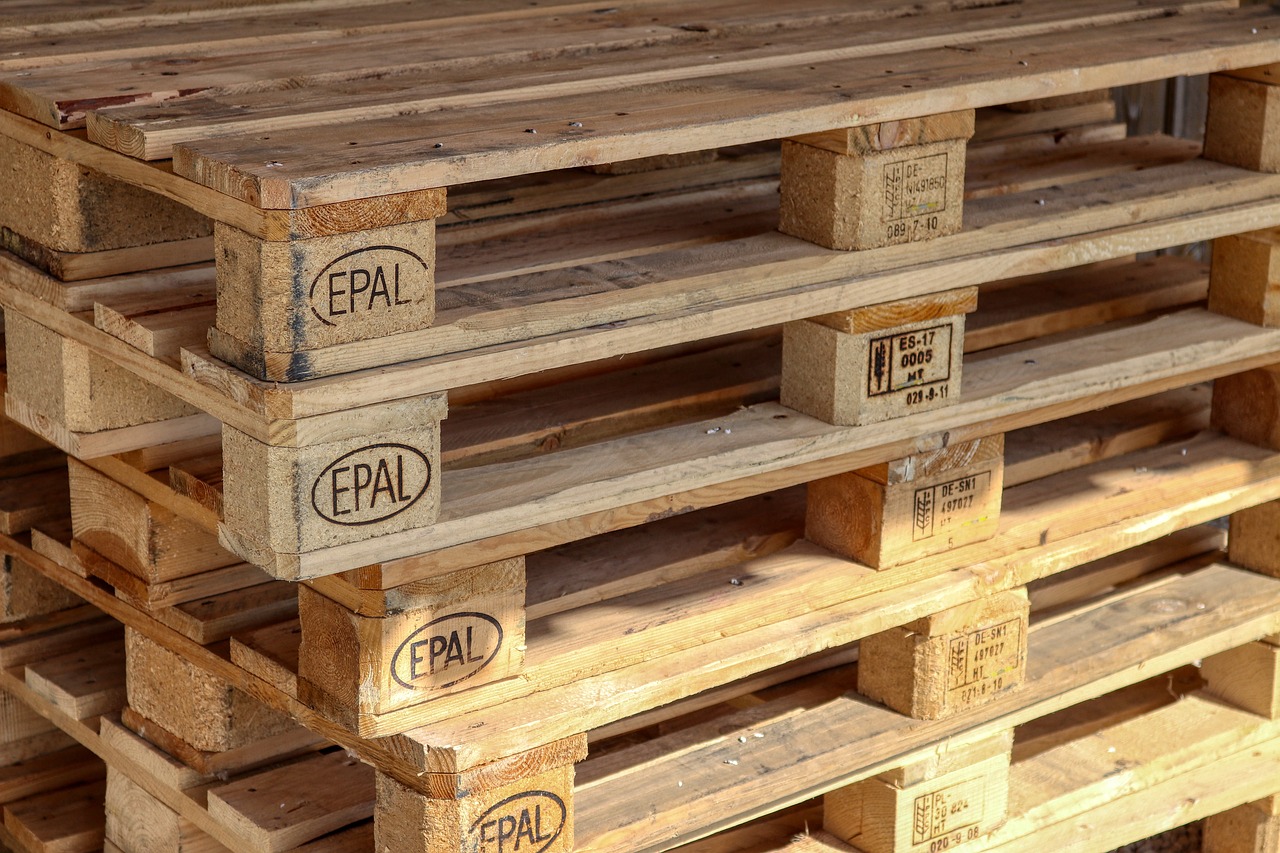
Weatherproofing Outdoor Projects
When it comes to DIY pallet projects for your outdoor spaces, weatherproofing is a crucial step that can make all the difference in ensuring the longevity and durability of your creations. After all, nobody wants to see their beautifully crafted pallet bench or planter deteriorate due to the elements! So, how do you go about weatherproofing your outdoor projects effectively? Let's dive into some essential techniques and tips that will help safeguard your creations from rain, sun, and snow.
First and foremost, selecting the right type of wood is vital. While most pallets are made from softwoods, some are treated with chemicals that can be harmful to the environment. Look for pallets that are marked with HT (heat-treated) rather than MB (methyl bromide), as the latter indicates chemical treatment. Heat-treated pallets are not only safer for your garden but also tend to be more resilient against the elements.
Once you have your pallets, the next step is to prepare them for weatherproofing. This involves thoroughly cleaning the wood to remove any dirt, mold, or debris that could interfere with the protective treatments. A simple mixture of water and mild soap, along with a scrub brush, can do wonders. After cleaning, allow the pallets to dry completely before applying any protective coatings.
Now, let’s talk about the various weatherproofing solutions available. Here are a few popular options:
- Wood Sealant: This is a clear or tinted liquid that penetrates the wood, providing a protective barrier against moisture. It’s essential to apply at least two coats, allowing ample drying time in between.
- Outdoor Paint: If you want to add a splash of color to your pallet project, using exterior-grade paint can provide excellent protection against UV rays and moisture. Just ensure the paint is specifically designed for outdoor use.
- Waterproofing Spray: This is an easy-to-apply option that can be sprayed on and is particularly effective for intricate designs or hard-to-reach areas.
After applying your chosen weatherproofing solution, it’s important to allow the pallets to cure properly. This may take anywhere from 24 to 72 hours, depending on the product used and environmental conditions. During this time, keep the pallets in a shaded area to avoid direct sunlight, which can cause the treatment to dry too quickly and not adhere properly.
Finally, even after weatherproofing, regular maintenance is key to keeping your outdoor pallet projects looking their best. Depending on your climate, consider reapplying your weatherproofing treatment every year or two to ensure ongoing protection. Regular inspections for signs of wear, such as peeling paint or cracks in the sealant, will help you catch any issues early before they become significant problems.
In conclusion, weatherproofing your outdoor pallet projects is not just an optional step; it's an essential part of the process that ensures your hard work stands the test of time. With the right preparation, materials, and maintenance, you can enjoy your DIY creations for years to come, no matter what Mother Nature throws your way!
Q1: How often should I weatherproof my outdoor pallet projects?
A1: It is recommended to reapply your weatherproofing treatment every year or two, depending on your local climate and the wear and tear your projects experience.
Q2: Can I use any type of paint for my pallet projects?
A2: No, you should use exterior-grade paint specifically designed for outdoor use to ensure it withstands moisture and UV exposure.
Q3: What is the difference between heat-treated and chemically treated pallets?
A3: Heat-treated pallets (marked with HT) are treated with heat to kill pests and are safe for use, while chemically treated pallets (marked with MB) have harmful chemicals that can leach into the soil and should be avoided for garden projects.
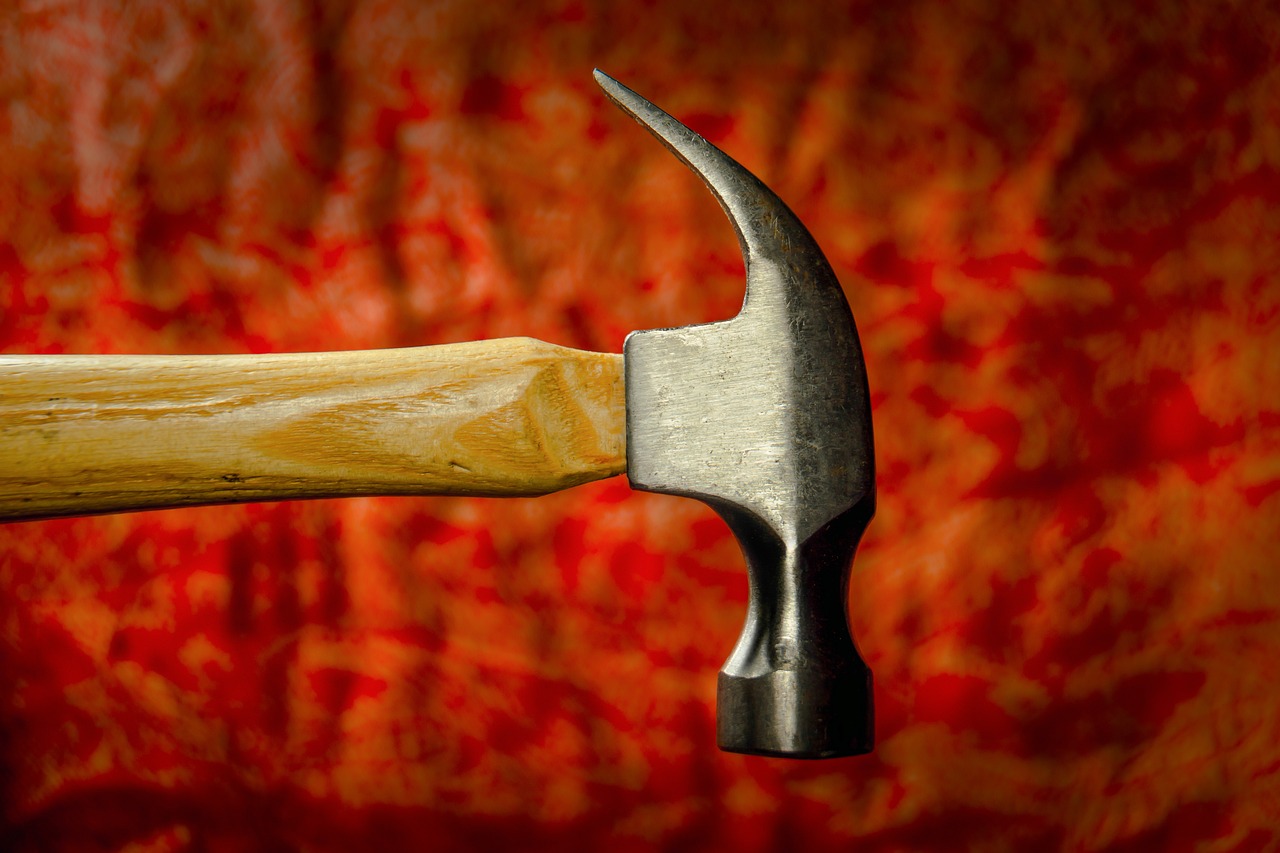
Conclusion: Embracing DIY Pallet Projects
As we wrap up this exploration into the world of DIY pallet projects, it's clear that these humble wooden structures offer an incredible opportunity for creativity and sustainability. By embracing the art of pallet crafting, you not only enhance your living space but also engage in a rewarding process that allows you to express your personal style. Imagine transforming a simple pallet into a stunning coffee table or a charming garden bench that becomes the centerpiece of your outdoor gatherings. The possibilities are truly endless!
Moreover, the benefits of using pallets go beyond aesthetics. They are cost-effective, allowing you to create beautiful home enhancements without breaking the bank. With a little effort and imagination, you can turn discarded pallets into functional pieces that serve your needs while also being environmentally friendly. It's like turning trash into treasure, and who doesn’t love a good transformation story?
Throughout this article, we've discussed essential tools, creative project ideas, and maintenance tips, all aimed at ensuring your pallet projects are not only successful but also enjoyable. Whether you are a seasoned DIY enthusiast or a curious beginner, there's something immensely satisfying about taking on a project that challenges your skills and expands your creativity.
As you embark on your own pallet crafting journey, remember to take your time, enjoy the process, and let your imagination run wild. Don't hesitate to experiment with different designs, colors, and finishes. Each project is a unique opportunity to learn and grow as a DIYer. So grab those pallets, dust off your tools, and get ready to embrace the joy of creating something beautiful with your own hands!
- What types of pallets are safe to use for DIY projects?
Look for heat-treated pallets (marked with HT) as they are safe for indoor use. Avoid pallets with chemical treatments, which can be harmful.
- How do I clean and prepare pallets before using them?
Start by removing any nails or staples, then wash the pallets with soap and water. Allow them to dry completely before starting your project.
- Can I use pallets for outdoor furniture?
Absolutely! Just make sure to weatherproof your outdoor projects with appropriate sealants to protect them from the elements.
- What tools do I need for basic pallet projects?
Basic hand tools like hammers, saws, and screwdrivers are essential. Power tools like drills and sanders can also make your project easier and more efficient.
Frequently Asked Questions
- What are the benefits of using pallets for DIY projects?
Pallets are incredibly versatile and cost-effective. They can be repurposed into a variety of functional and decorative items for your home, making them an eco-friendly choice. Plus, working with pallets allows for creative expression while saving money!
- What tools do I need to start my pallet project?
To kick off your pallet projects, you’ll need some basic hand tools like a hammer, saw, and screwdriver. If you're feeling adventurous, power tools like a jigsaw or drill can make the process smoother and quicker. Don’t forget safety equipment like gloves and goggles to protect yourself while crafting!
- How do I choose the right pallets for my projects?
Not all pallets are created equal! Look for pallets that are in good condition, free of damage, and made from untreated wood. Consider the size and type of wood based on your project needs. Quality pallets will ensure your creations are sturdy and last longer.
- What are some creative ideas for pallet projects?
The possibilities are endless! You can create furniture like tables, chairs, and shelves, or even outdoor projects like garden planters and benches. Let your imagination run wild, and don’t hesitate to mix and match ideas to suit your style!
- How can I maintain my pallet creations?
Regular cleaning is key to keeping your pallet items looking fresh. For outdoor projects, weatherproofing is essential to protect them from the elements. A good coat of sealant or paint can go a long way in ensuring your creations withstand the test of time.
- What finishing techniques should I use on my pallet projects?
Finishing techniques like sanding, staining, or painting can enhance the look of your pallet creations. Sanding smooths out rough edges, while staining or painting can add color and protect the wood. Choose finishes that complement your home’s aesthetic!



















